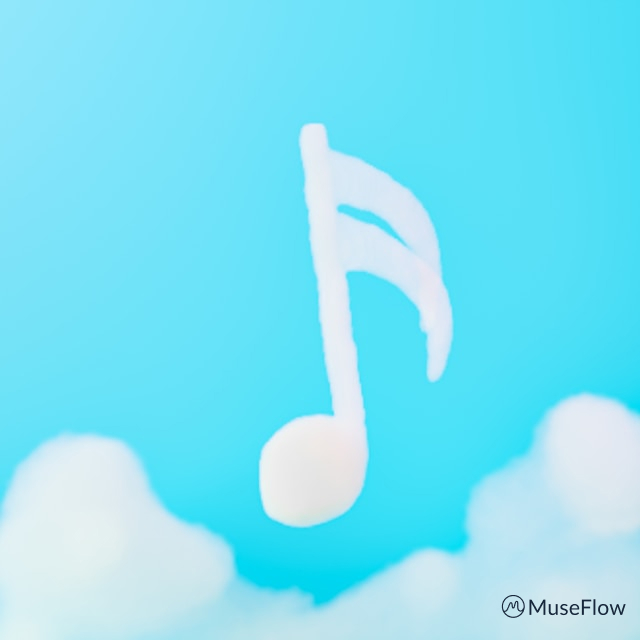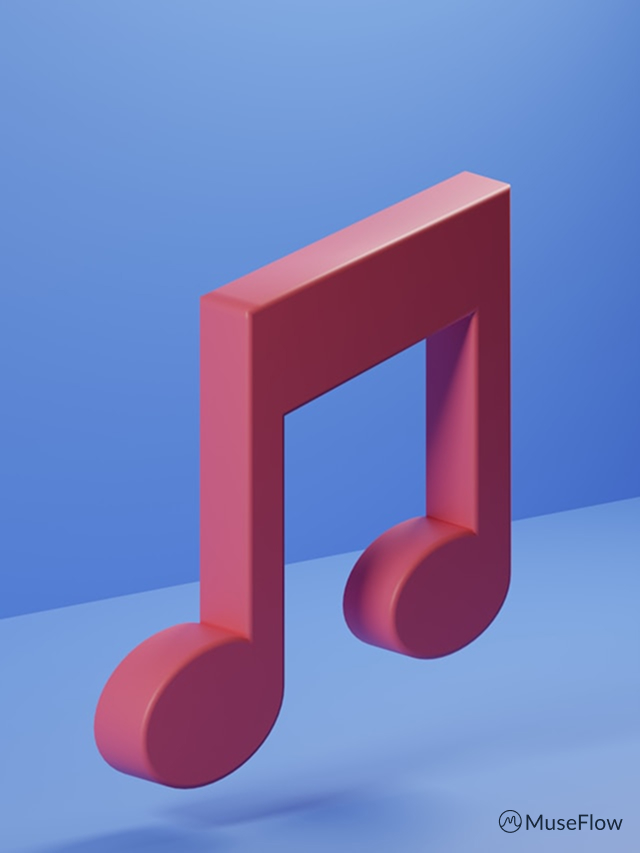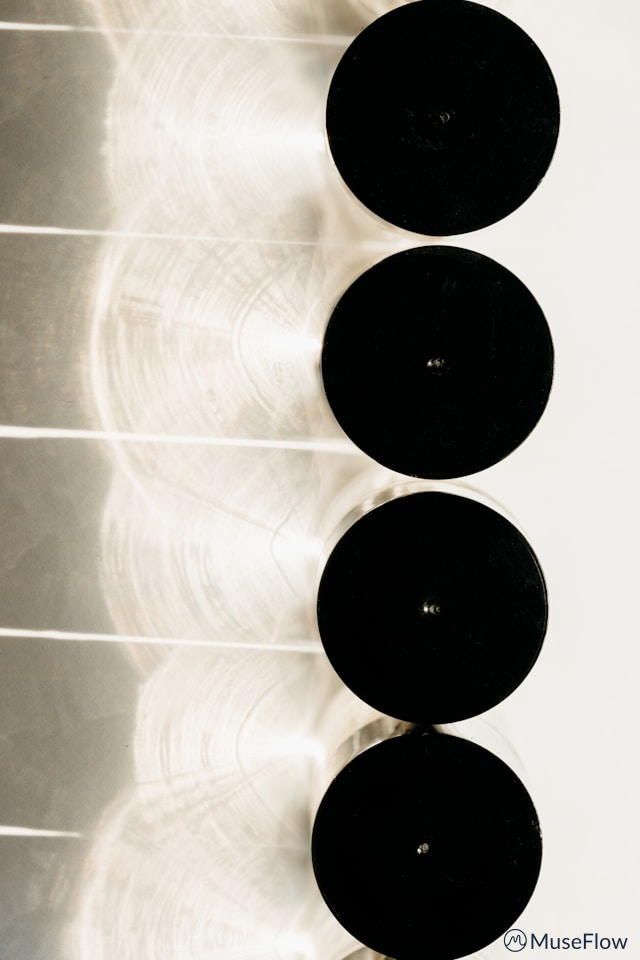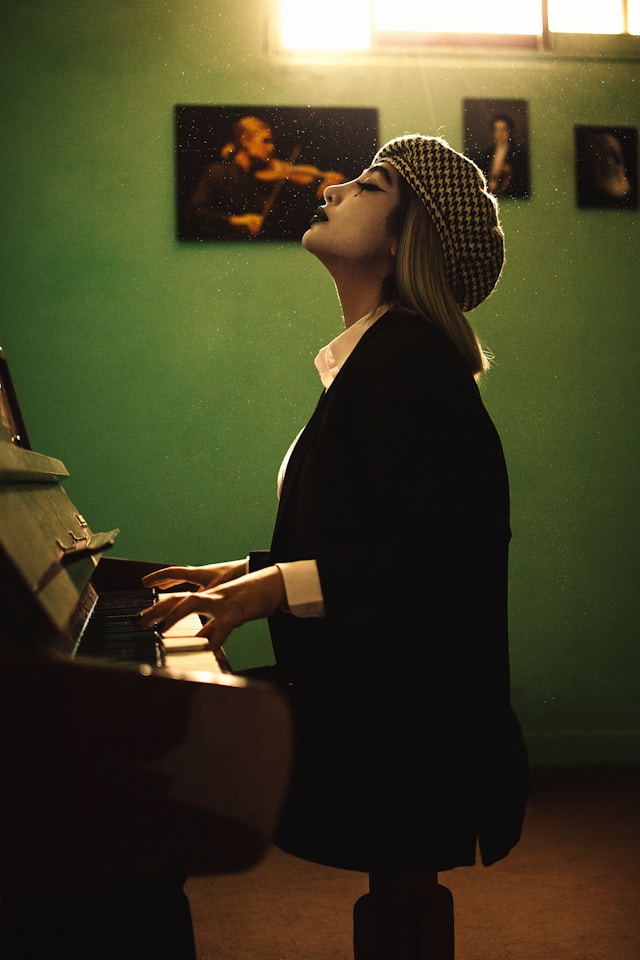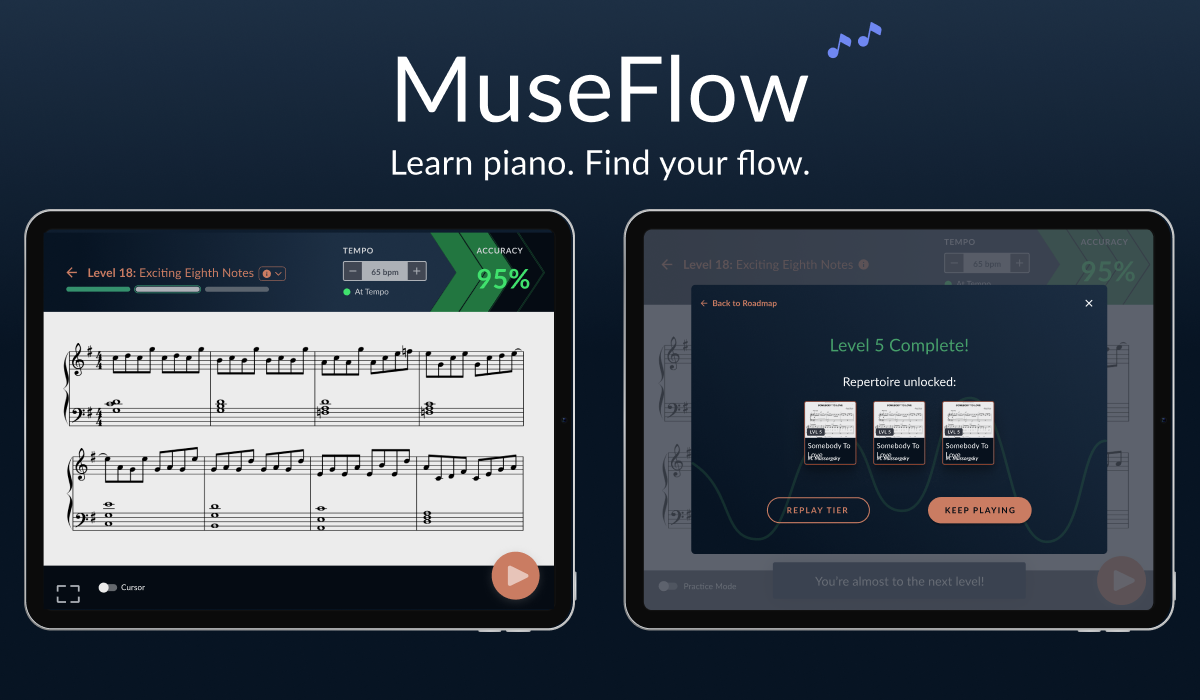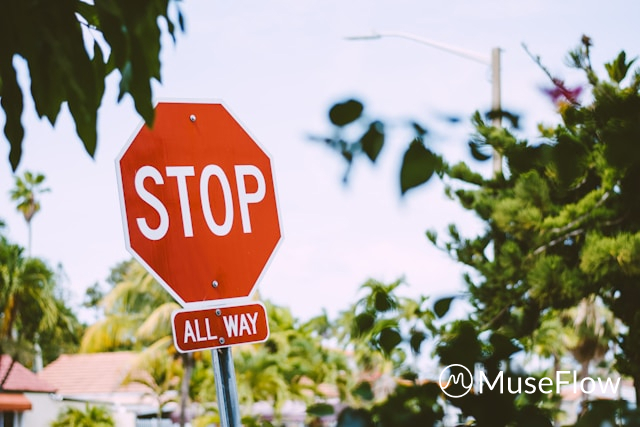Unlocking Creativity: The Link Between Music and Mental Health
Let’s talk about the last time you felt anxious, overwhelmed, or sad. Maybe you were grieving the end of a relationship or the loss of a pet. Maybe you were struggling with the change of seasons or shifting family dynamics. These experiences are tough, and it can be hard to cope.
Now let’s think about the tools you used to manage those emotions. Did music play even a small role in helping you feel better?
If it didn’t, it probably could have—because both listening to and playing music can offer comfort when talking alone can’t. Music soothes us when we’re stressed and instills hope when we’re depressed, restless, or simply interested in self-improvement. Piano learning apps could be a solid place to start.
We’ll talk about one of the best piano learning apps shortly. First, let’s discuss the link between music and mental health.

The Music-Mental Wellness Connection
The secret is out, and music can 100% help us regulate our emotions. Before we talk about what that looks like, consider Merriam-Webster’s definition of music:
a: vocal, instrumental, or mechanical sounds having rhythm, melody, or harmony
b: the science or art of ordering tones or sounds in succession, in combination, and in temporal relationships to produce a composition having unity and continuity
The verdict is in, and by definition, music is both an art and a science. It also promotes unity and has a soothing effect on the body. This is because music reaches deep into the endocrine system, which produces the hormones that impact how we feel. So when we play or listen to music, the body triggers the release of dopamine—the feel-good hormone responsible for pleasure and reward.
“I don’t think I’ve ever been this good at reading music. It never made sense to me before.” – Arjuna C., MuseFlow (a piano learning app) student
At the same time, music lowers cortisol, the stress hormone, making us feel calmer and more at ease. It can even improve our immune health by increasing levels of an important antibody, salivary immunoglobulin A, which offers protection from illness. And another study found that playing or listening to music at 60 beats per minute can induce a state of relaxation by driving alpha wave activity. (Alpha waves are associated with wakeful relaxation, which helps the brain unwind and fuels mental clarity.)
It’s no wonder that in therapeutic settings, experts use music to help clients process their emotions. Techniques like guided listening and music improvisation allow people to access their feelings and memories in ways that might be difficult to articulate verbally. From where we’re standing, it makes total sense that 71% of surveyed adults cited music as the greatest influence on their mood. After all, creativity makes us feel good.

How Creativity Blooms Through Playing Music
Listening to music is powerful—but playing music can have an even greater impact. Learning to play an instrument like the piano is a solid way to get your creative juices flowing. You see, learning new things that are right outside your skill level challenge the brain to think in new ways: finding patterns, making connections, and ultimately achieving a flow state. This helps us break free from linear thinking and fully embrace creative problem-solving.
“Let’s go!! Kept myself in the flow state by first dropping the tempo so it wouldn’t be too frustrating, then got comfortable, then before it became too easy to the point of boring I reattempted it at goal tempo and I passed. What a rush of dopamine from completing the level that initially I couldn’t do!!” – Kyle L., MuseFlow student
From a neuroscience standpoint, learning an instrument like the piano activates several areas of the brain all at once. AI piano teaching apps like MuseFlow, for instance, engage the prefrontal cortex—responsible for planning and decision-making—along with the motor cortex and auditory system. This helps improve emotional regulation and unlocks creativity.
Fortunately, platforms like MuseFlow are making it easier than ever to learn the piano and unlock your full creative potential. Regardless of your skill level, piano training apps will give you space to clear your mind and grow creatively.

Music and Well-Being—Where Does Technology Come In?
Thanks to technology, engaging with music has never been more accessible—or more innovative. Piano practice apps like MuseFlow, recognized as one of the best piano apps of 2024, are transforming how we learn and experience music. These tools let people explore their creativity in ways that traditional methods might not.
For instance, piano lesson apps can guide students step-by-step through learning an instrument, complete with personalized feedback and positive encouragement. This real-time interaction builds confidence and creativity. Then, when. you’ve mastered a skill within this game-like environment, you can apply those skills to songs that get unlocked after you pass each level. not to mention, this approach also supports each user’s mental wellness.
“Any success I achieve is its own reward. Just having moved to the next higher level, I feel good and surprised that it went so quickly. That’s a plus!” – Dennis L., MuseFlow student
And technologies like interactive piano lesson apps break down barriers to access too. With MuseFlow’s intuitive design and seamless user experience, anyone can start learning the piano from the comfort of their home—completely at their own pace. Together, music and technology are making creativity and well-being more accessible than ever.
So why not take the first step toward a healthier, more creative life? Start your seven-day free trial today and learn the piano through personalized sight reading with MuseFlow. You’ll also tap into the creative and therapeutic benefits of music.

.svg)
